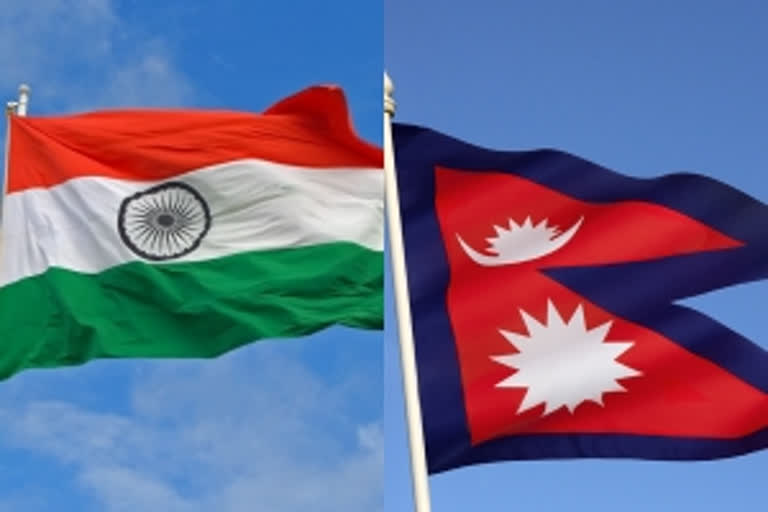Hyderabad: In an unprecedented development on Sunday (May 31) the Nepalese government introduced a Constitution amendment bill in Parliament that seeks to alter the country’s official map to show some parts of India as falling within its borders. This comes after a complex but relatively dormant territorial dispute came into focus when India decided to inaugurate a road in Uttarakhand to open a new land route via the Lipulekh pass for the annual Kailash Mansarovar pilgrimage.
The dispute has been simmering since Delhi issued an official map after the re-organization of the erstwhile J&K state and included areas such as Kalapani and Lipulekh that Nepal deems to be its own. Claims by Nepal that this act by Delhi was a departure from the earlier agreements on the contentious and sensitive matter were rejected by India and the situation was further exacerbated by remarks made by the Indian Army Chief General Naravane who suggested that Kathmandu may be protesting at the behest of 'another' country – alluding to China.
The bilateral relationship between India and the land-locked nation of Nepal is often described as ‘special’ and for good reason. The 1950 Peace and Friendship Treaty gives Nepali citizens much the same access and opportunity to work in India as is the case for Indian citizens and the border is open.
The fact that Nepali citizens are part of the Indian military (the highly respected Gorkha regiments) and that some even rise to general officer rank is without precedent between any two other nations and is to be cherished. By tradition, the Indian army chief and his Nepali counterpart are invested with the honorary rank of General in each other's army, in a special ceremony. The symbolism of this investiture is substantial.
Located between the two Asian giants, India and China the relatively smaller Nepal has made a tumultuous but determined transition from monarchy to democracy beginning 2006 and during this period the resilience of the ‘special’ relationship has been tested. Given its complex domestic demographic mix and the centuries-old linkages with mainland India across a 1,750 km long border, the India-Nepal relationship is multi-layered.
READ:Animal bone unearthed during Keezhadi excavation in Tamil Nadu
The Hindu character of the erstwhile kingdom that is also the land of the birth of the Buddha and the more recent Maoist insurgency phase and nascent electoral compulsions have introduced a new socio-political dynamic in the proud but relatively impoverished mountain nation.
The special relationship with India has since frayed and the fact that the Nepal Communist Party is now in power in Kathmandu has given China a political cum ideological advantage that was not a factor in earlier decades. Southern Asia has distinctive political geography reflected in the fact that none of the individual nations (Pakistan, Bangladesh, Nepal, Bhutan, and Sri Lanka) have a border with each other and are part of the extended region only through a border with India.
In certain trijunctions, China is also part of the grid thereby adding to the cartographic tangle and intractability in many of India's unresolved territorial disputes.
